Long-term datasets are urgently required to understand and analyze changing conditions across coastlines
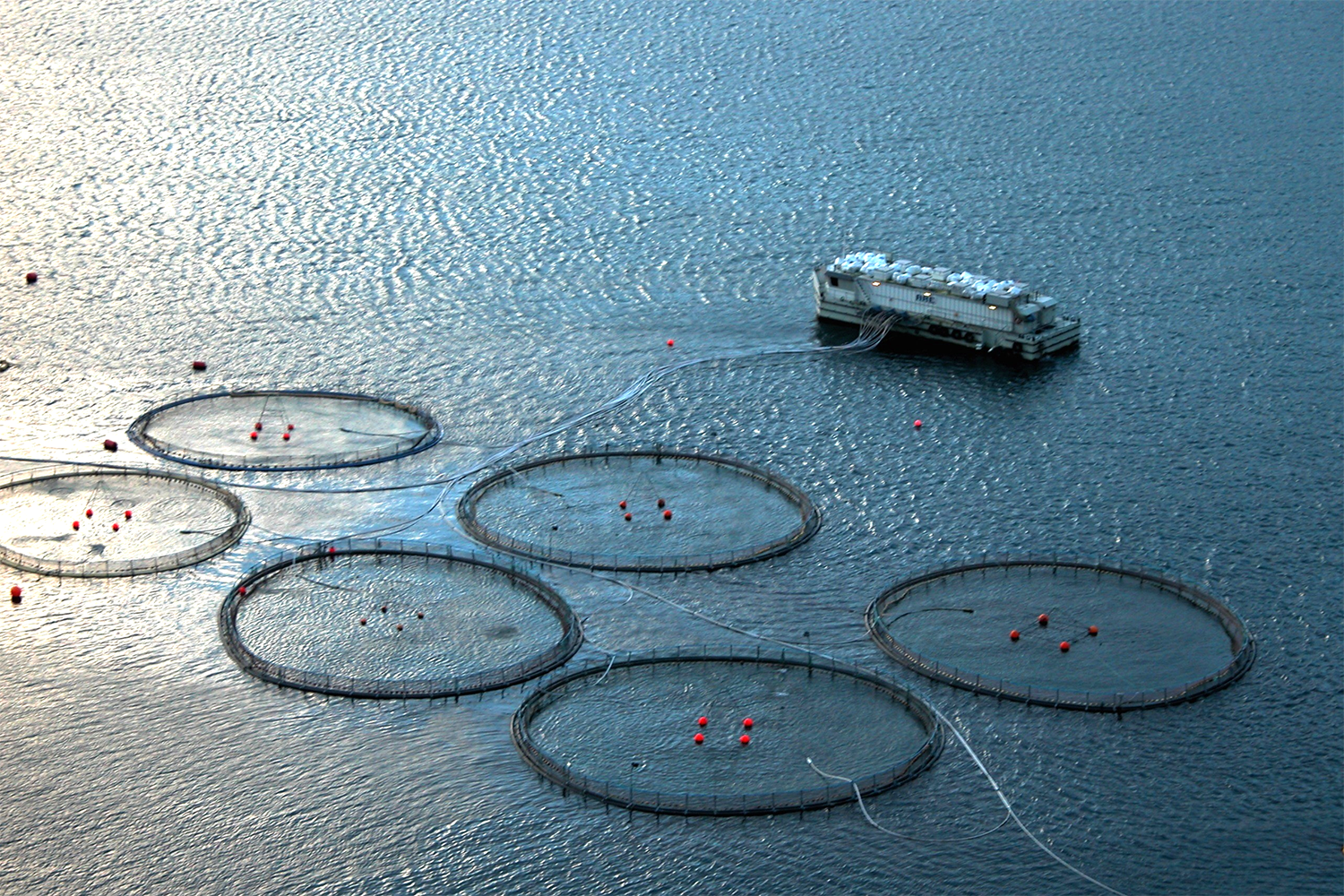
Long-term datasets of in-situ observations are essential for monitoring changes in the marine environment. There are monitoring programs and observation stations all over the world, but the ocean is huge, and the coastlines are long and complex, meaning observations are still lacking in most areas. Where observations are missing, averages or values from the nearest available location are often used. However, focusing on averages and ignoring the variability of conditions can underestimate the effects of climate change on organisms as they are influenced by their own surroundings. Hence, there is a need for more data to better understand actual conditions, especially when it comes to aquaculture.
Some aquaculture sectors, especially those farming high-value marine finfish such as Atlantic salmon, have entered the era of precision fish farming (PFF) where enhanced data collection and increased digitalization are supporting more data-driven decisions to improve many different aspects of fish production. Salmon aquaculture producers routinely monitor environmental conditions as part of their operational procedures and day-to-day farm management practices. Hence, vast amounts of valuable data are being collected by the salmon sector, and this could offer important insights into the marine environment, beyond its use in daily husbandry.
Norway is responsible for over half of the world’s Atlantic salmon, and one of the reasons for its dominance in salmon aquaculture, is its long and complex coastline that provides many locations that are suitable for aquaculture. In 2012, the Norwegian government launched BarentsWatch, an online web portal that provides information relevant to marine activities in Norway. It is a regulatory requirement that salmon farmers submit a weekly report to the Norwegian Food Safety Authority that includes sea temperature at 3 meters depth, salmon lice treatments, and number of salmon lice.
This article – summarized from the original publication (Falconer, L. et al. 2025. Marine aquaculture sites have huge potential as data providers for climate change assessments. Aquaculture Volume 595, Part 1, 30 January 2025, 741519) – presents the results of a study that inspected the weekly sea temperature data collected from salmon lice monitoring within the Fish Health dataset in BarentsWatch and considered if the recorded temperatures could have value for monitoring climate change due to the spatial and temporal coverage of the farm data.
Study setup
More than 1000 salmon farms are found along the Norwegian coast, which has been divided by the authorities into 13 aquaculture production regions. Production is not evenly distributed across the regions, as shown on Fig. 1, and not all farms are actively producing fish at the same time. Each week, as part of fish health reporting, the salmon companies upload sea temperatures from 3m depth for each site that is currently stocked with fish; these data are then made publicly available on BarentsWatch, which updates each day, so it has near real-time data where possible. The Salmon Lice dataset, which contained weekly sea temperatures at 3 m depth, was downloaded from the BarentsWatch Fish Health section.
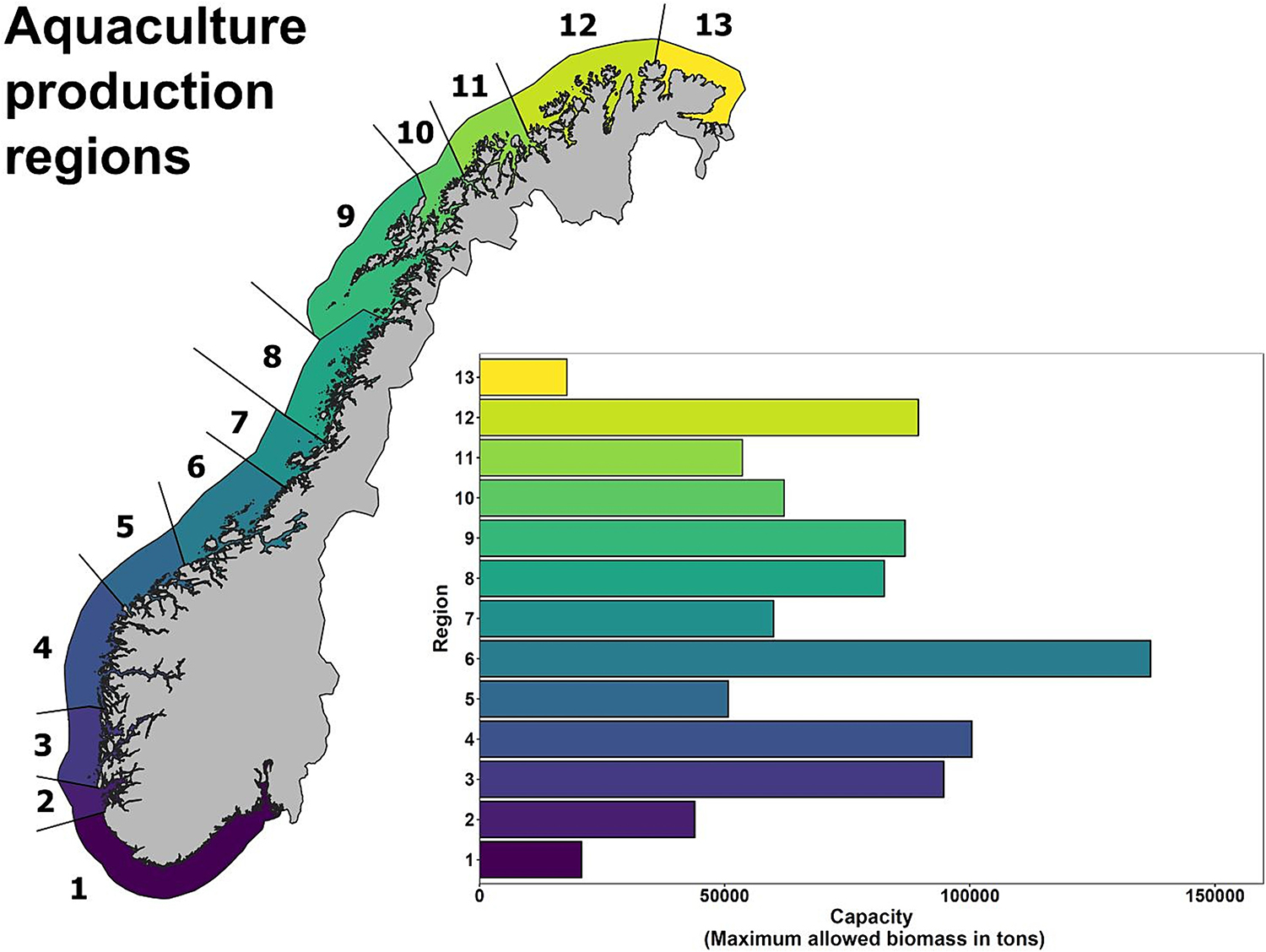
For detailed information on the databases, data cleaning and analyses, and case studies, refer to the original publication.
Results and discussion
This study considered if aquaculture industry data originally collected for sea lice monitoring purposes and shared on the Norwegian BarentsWatch platform could be valuable for climate change assessments. Temperature data from 3m depth was available for over 1000 farm sites, covering most of the Norwegian coastline, and 13 degrees latitude (58 degrees N to 71 degrees N). The latitudinal range of sites is useful for climate change assessments as some areas, such as the Arctic, are warming faster than others. Furthermore, the sites in BarentsWatch covered a wide range of farming conditions from sheltered, inner fjord, to more exposed, open coast.
The results show that the reported temperatures between the individual sites varied considerably, indicating that regional or national averages can under- or over-estimate site-specific temperatures. The variability of farm conditions confirms the need for local-scale monitoring to support climate change assessments for aquaculture. However, our analysis of the BarentsWatch dataset has revealed some challenges that need addressed if the dataset was to be used for climate change monitoring.
A major challenge when implementing and operationalizing a national-scale data platform with many different data sources is achieving consistent and comparable data. The near-surface layer of the sea is subject to considerable temperature variation in space and time, due to the complex effects of atmospheric conditions, such as wind, rain, and cold fronts, as well as diurnal variations. In fjords, freshwater runoff may also influence spatio-temporal temperature variation through its effects on fjord circulation and vertical mixing. Without clear guidance and standardization, farms may record temperatures at different depths, which would affect comparisons between sites.

In this study, the BarentsWatch temperature data was used with a certain level of confidence as the regulatory requirements state temperatures reported to BarentsWatch must be taken at 3m depth. However, while at least weekly measurements are required by the regulation, there are no requirements or guidelines for when the measurement is to be made, e.g., the time of the day, or how to aggregate and report multiple or continuous measurements done over a week. We also acknowledge the scope for potential errors regarding the exact placement, calibration and maintenance of the sensor, which could affect the precision and accuracy of the results.
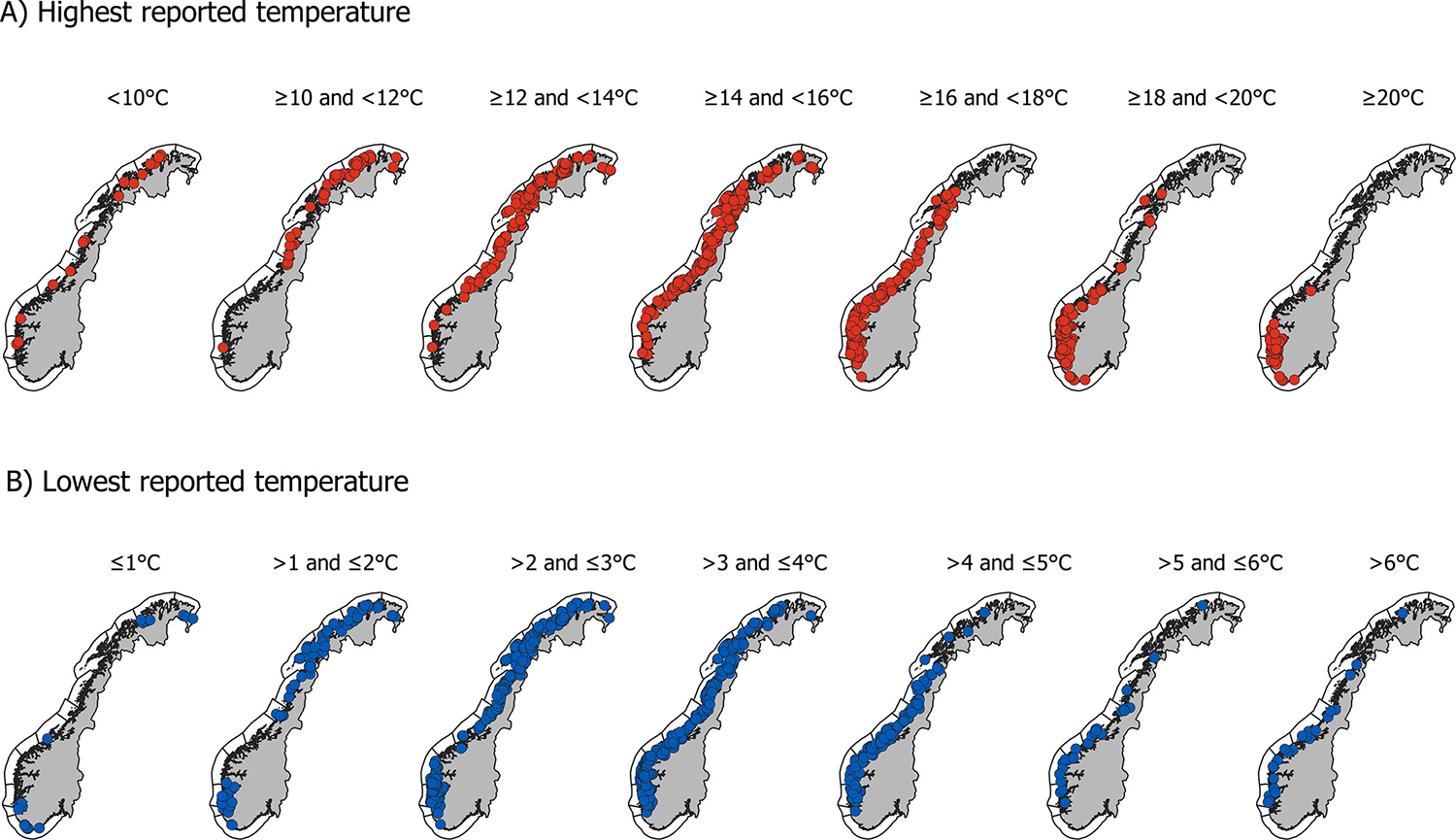
As climate change assessments require monitoring of conditions over very long time periods (decades), data users also need to remember that technology will change over time with new and different sensing equipment that could affect some analysis and the interpretation of results.
Many salmon farms are moving more towards automated data collection via sensors, and this has increased the availability of data that can be used to better understand the range of spatio-temporal conditions that fish are exposed to. However, the increasing and accelerating variety (data type), volume (data size) and velocity (production and processing speed) of data, as well as questions over veracity (data quality and reliability) and value (worth of data), create many data management challenges.
There were large data gaps when individual farms were not stocked or not recording data, and this affects overall usability of the data for climate change studies as long-term continuous datasets are needed for analysis. Furthermore, incomplete datasets or infrequent sampling times may miss important extreme events such as marine heatwaves. Modelling approaches relying on data from the nearest active neighboring farms and other complementary data sources could potentially serve to fill the gaps, with some uncertainty. More frequent data and continual monitoring of variables such as temperature, even when fish are not stocked in the farms, would be useful for climate change assessments, as has already been highlighted in other studies.
From this study it is clear that there is huge potential to use the BarentsWatch data for climate change assessments, but there is also a need for more dialogue between industry, researchers, and regulators so that all groups understand the opportunities and challenges in collecting, delivering and using in-situ data to gain better understanding of how climate change is affecting the marine environment and the impacts on aquaculture and other coastal users.
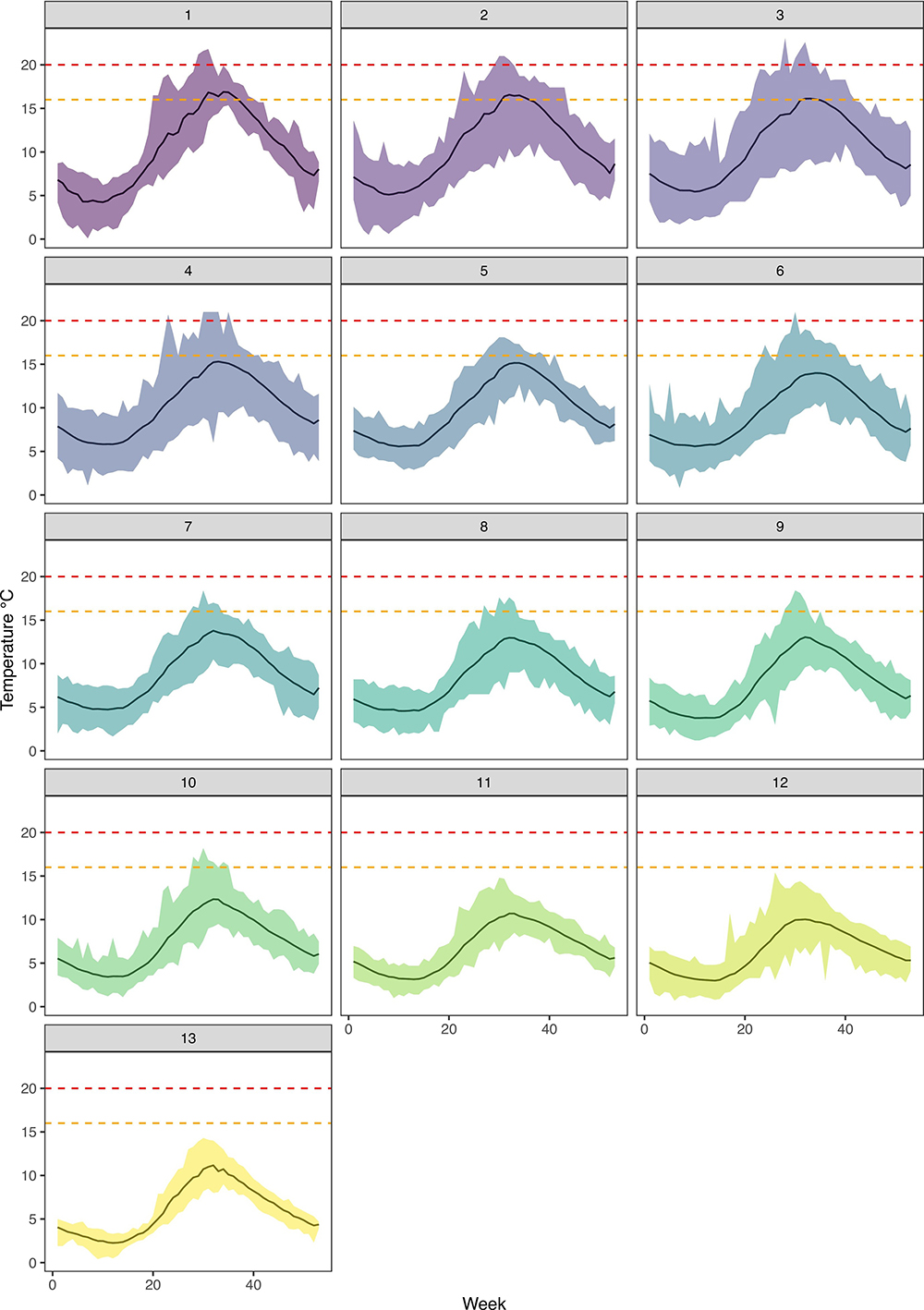
For additional information, refer to the original publication. Adapted from the original.
This study has focused on salmon, and it is important to acknowledge that salmon is a high-value commodity in comparison to some other species, and producers of other farmed species may not have the same capacity and resources for data collection and sharing at present. In many countries where data is routinely collected, a full-scale data platform may be a long-term ambition, but there will be other routes that have more utility for making this type of data available and accessible. However, it is also important to acknowledge that there are parts of the aquaculture sector where data collection is limited. Furthermore, there are often concerns about making data publicly available, so there is a need for more demonstrable examples of how data sharing can benefit the aquaculture sector.
The findings in this study suggest it would be useful to have a wider discussion on the needs and uses of coastal data amongst all stakeholders and potential data providers, including the aquaculture sector, to determine what is desired and what is feasible. Data is urgently required since climate change is occurring at an unprecedented rate, but there are still huge knowledge gaps in how the local environment is changing and how this will affect the aquaculture sector and other activities in most coastal areas.
At present, the temperature data within BarentsWatch cannot be used for robust climate assessments due to the lack of standardization. However, if the temperature data was in a more accurate, precise, and comparable format then it could be used to analyze trends and anomalies, which is important to identify rates of change, including seasonal differences, and variability between locations. Long-term records of continuous temperature data are also essential to identify extreme events such as marine heatwaves and cold spells. Hence, the more robust, long-term continuous data that is available, the more targeted and refined climate change assessments can be for specific locations.
Perspectives
This study shows that marine aquaculture has the potential to deliver long-term datasets that are urgently required to understand and analyze changing conditions across coastlines, but more work is required. The positioning of marine fish farms offers an exceptional opportunity to gain detailed information on the rate, magnitude, and variability of climate change in coastal areas. BarentsWatch is a good example of how aquaculture data can be made openly available in near real-time. However, even though BarentsWatch is well supported and resourced, improvements are needed to unlock the full potential of the aquaculture data and their use for understanding changes in coastal conditions.
Going forward, improvements in data collection and data processing are needed to improve data quality and consistency. Such improvements must be prioritized as this will increase the utility and usability of the data and generate important knowledge not only for the aquaculture sector, but with the potential for a much greater utility for a broader range of stakeholders. Other countries, or other parts of the aquaculture sector, may not have the same level of resources to develop and maintain a full-scale interactive data platform like BarentsWatch, but data can still be shared in simpler formats. Regardless of the method of data sharing, a data platform, or even a simple database, is only useful if it contains reliable data. Hence, more standardized data collection and reporting is essential across all parts of the aquaculture sector.
This research also showed that temperature data, originally collected to conform to a sea-lice health monitoring remit, could have value in monitoring climate change in coastal areas and climate change impact assessments, but improvements are needed. The regulatory requirement to report sea temperatures is the reason for the large volume of sea temperature data within BarentsWatch, and further clarification that specifies data collection requirements would be an important step in facilitating use for climate change assessments, and other uses. Delays in realizing the value of this potential data source are lost opportunities to gain important information.
Editor’s note: This article has been amended to include the lead author’s name in the byline. We regret the oversight.
Now that you've reached the end of the article ...
… please consider supporting GSA’s mission to advance responsible seafood practices through education, advocacy and third-party assurances. The Advocate aims to document the evolution of responsible seafood practices and share the expansive knowledge of our vast network of contributors.
By becoming a Global Seafood Alliance member, you’re ensuring that all of the pre-competitive work we do through member benefits, resources and events can continue. Individual membership costs just $50 a year.
Not a GSA member? Join us.
Author
-
Elisabeth Ytteborg
Nofima, Muninbakken 9-13, Breivika, Box 6122, Langnes, NO-9291 Tromsø, Norway
Related Posts
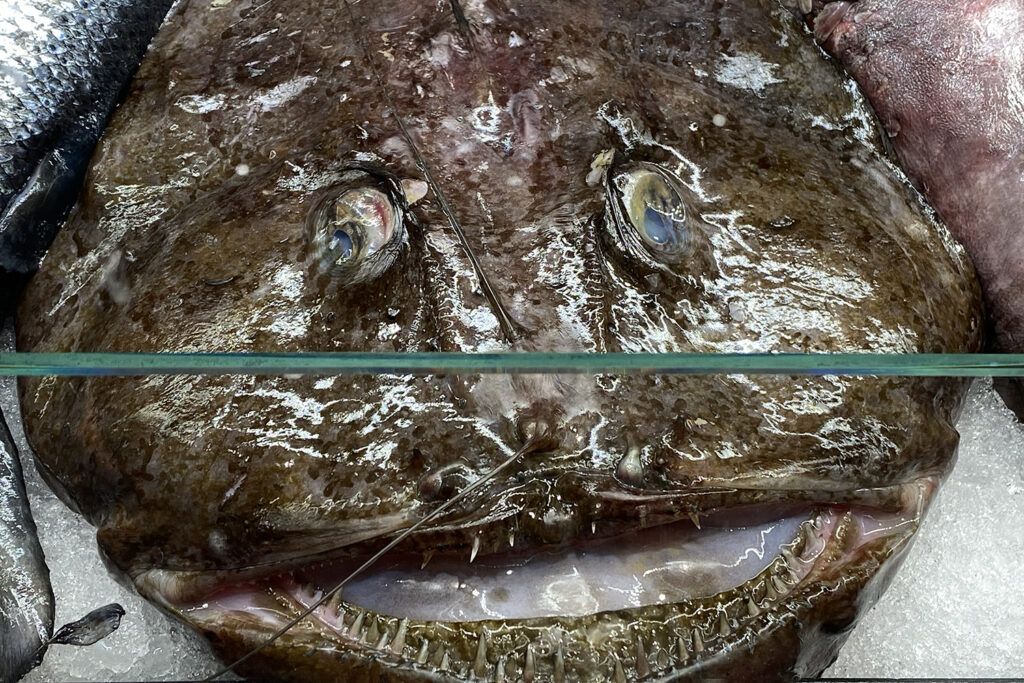
Intelligence
Alternative feeds, sea lice solutions and animal welfare innovations for aquaculture addressed in Bergen
Addressing aquaculture’s top challenges and opportunities, a call for collaboration emerges at the North Atlantic Seafood Forum in Norway.
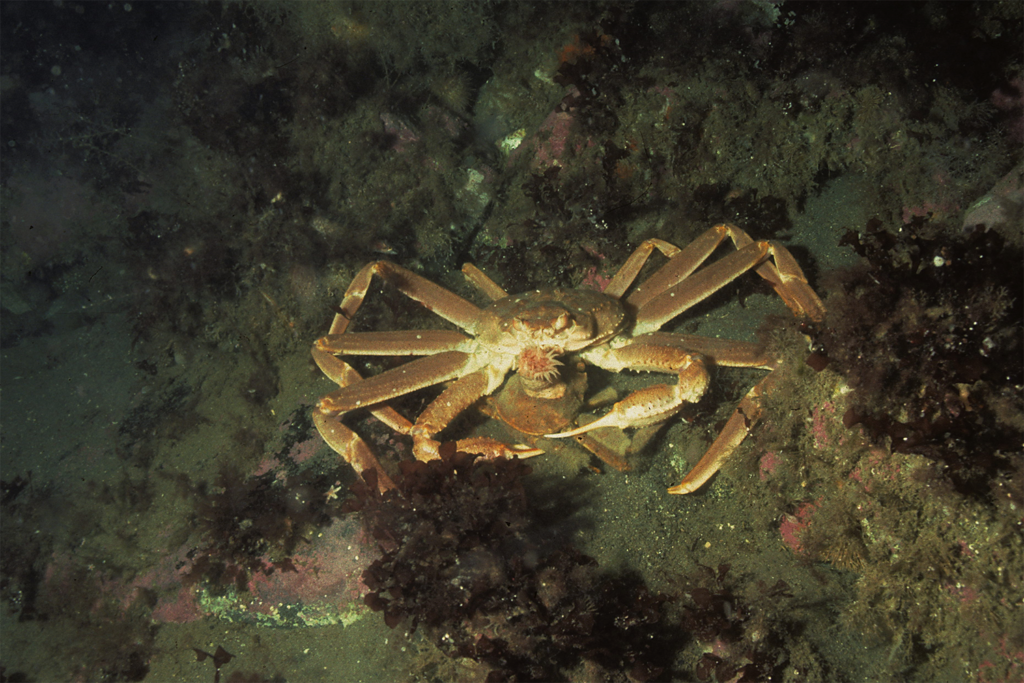
Fisheries
Comparing fishing catch efficiency of self-baited, ghost snow crab pots and actively baited pots in the Barents Sea commercial fishery
The impact on the marine environment caused by ghost fishing gear is not always increasing due to self-baiting and can vary during exposure.
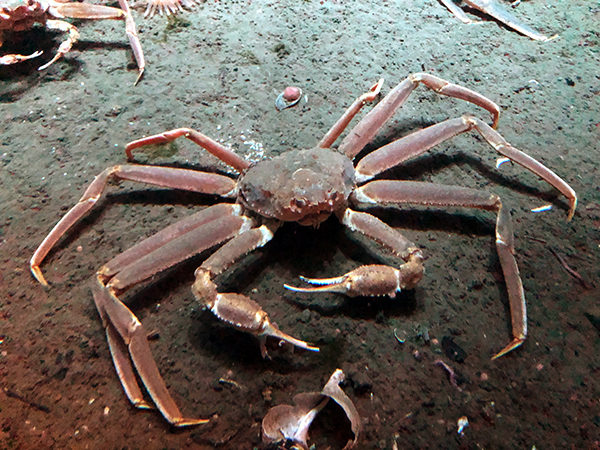
Fisheries
Marine byproduct-based bait performs well in Barents Sea snow crab fishery
Experimental bait using marine byproducts was tested by SINTEF researchers in a Barents Sea snow crab fishery.
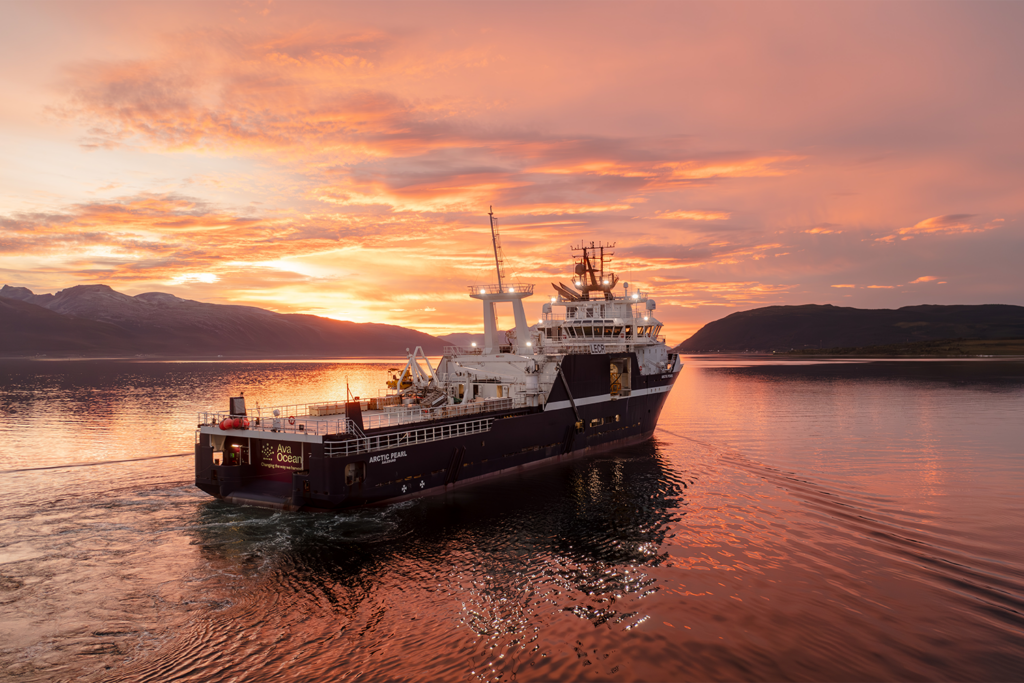
Innovation & Investment
Norway banned scallop harvesting in the Barents Sea. Responsible Seafood Innovation Award finalist Ava Ocean delivered a tech solution.
Ava Ocean proves scallop harvesting in the Barents Sea can be done responsibly using its selective “shellfish picker" technology.



